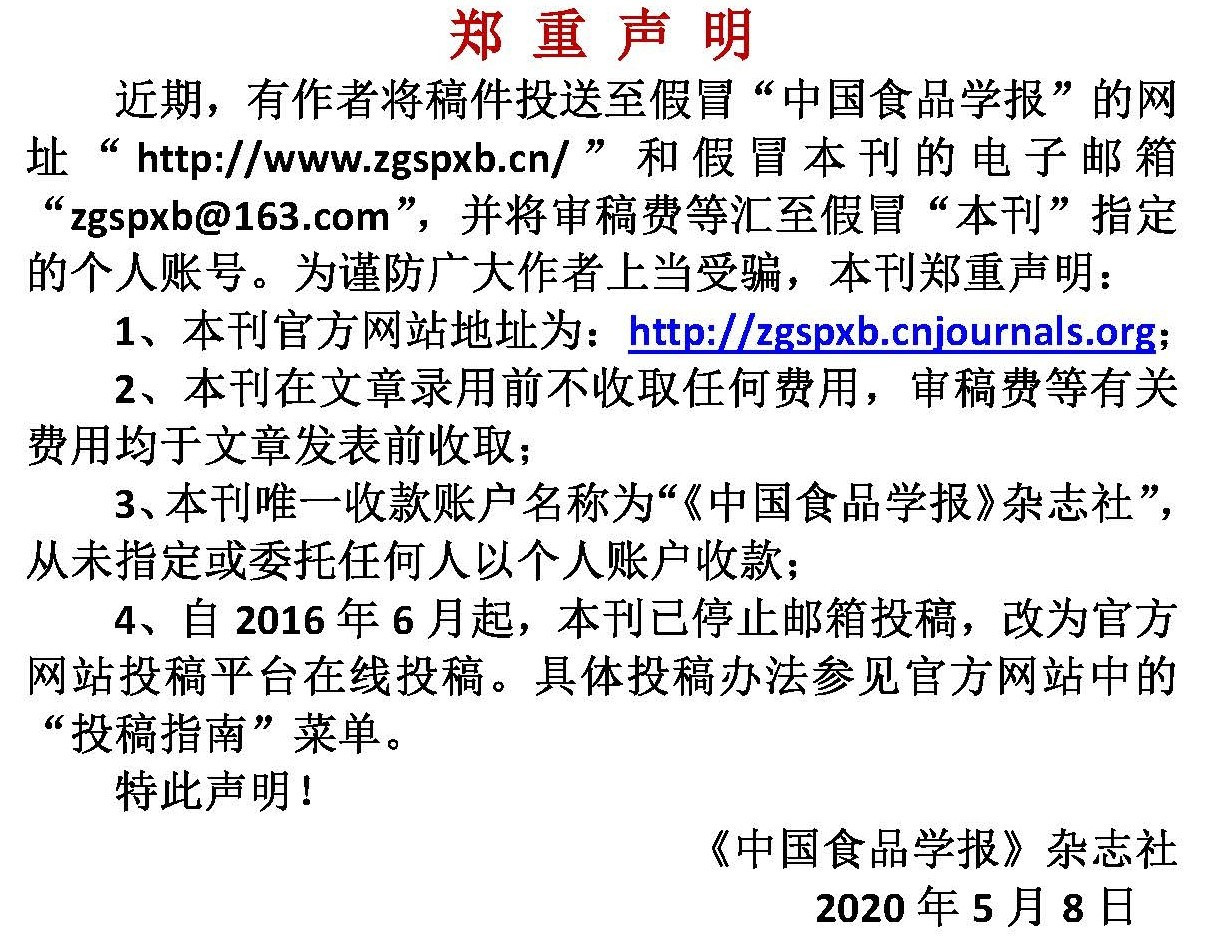香辛料对低盐虾酱中生物胺和风味的影响
作者:
作者单位:
(1.河北农业大学食品科技学院 河北保定 071001;2.北京工商大学食品与健康学院 北京 100048)
作者简介:
通讯作者:
中图分类号:
基金项目:
河北省重点研发计划项目(20327118D);河北省现代农业产业技术体系淡水养殖创新团队建设项目(HBCT2018180206)
Effect of Spices on Biogenic Amine and Flavor in Low-salt Shrimp Paste
Author:
Affiliation:
(1.College of Food Science and Technology, Hebei Agricultural University, Baoding 071001, Hebei;2.School of Food and Health, Beijing Technology and Business University, Beijng 100048)
Fund Project:
引用本文
班雨函,米思,韩军,马爱进,桑亚新,孙纪录.香辛料对低盐虾酱中生物胺和风味的影响[J].中国食品学报,2023,23(12):153-166
复制分享
文章指标
- 点击次数:
- 下载次数:
- HTML阅读次数:
历史
- 收稿日期:2022-12-28
- 最后修改日期:
- 录用日期:
- 在线发布日期: 2024-01-23
- 出版日期:
文章二维码

版权所有 :《中国食品学报》杂志社 京ICP备09084417号-4
地址 :北京市海淀区阜成路北三街8号9层 邮政编码 :100048
电话 :010-65223596 65265375 电子邮箱 :chinaspxb@vip.163.com
技术支持:北京勤云科技发展有限公司
地址 :北京市海淀区阜成路北三街8号9层 邮政编码 :100048
电话 :010-65223596 65265375 电子邮箱 :chinaspxb@vip.163.com
技术支持:北京勤云科技发展有限公司
